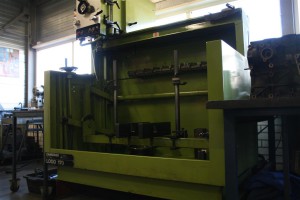Drill cylinder block
In a running engine, the pistons move up and down continuously in the cylinders. In the long run, this causes wear on parts of the cylinder wall. Overheating can cause the piston to expand further and further until it scrapes along the cylinder wall. Even greater damage to the cylinder wall can occur if, for example, the piston rings are broken and end up in the cylinder.
The cylinder wear is reflected in higher oil consumption and reduced compression. To remedy this, the cylinder is drilled out until it is regularly in shape again. Because the cylinder has become slightly larger in volume, new, oversized pistons are fitted.
Honing Cylinders
After fine drilling, post-processing is required in the form of honing. This means that the coarse traces of drilling are ground away. Moreover, a certain structure is introduced into the cylinder wall in order to achieve the right balance between minimum oil consumption and minimum wear of the piston rings. Honing is going to find an increasing application in machine and equipment construction. Whereas this machining method used to be practically only used in the automotive industry and engine overhaul workshops, nowadays the honing is used where holes with a straight and round surface are needed.
Pre-processing errors, such as taper, roughness, or wavy pre-processing, are corrected by honing with accurate dimensional control and roughness control.





